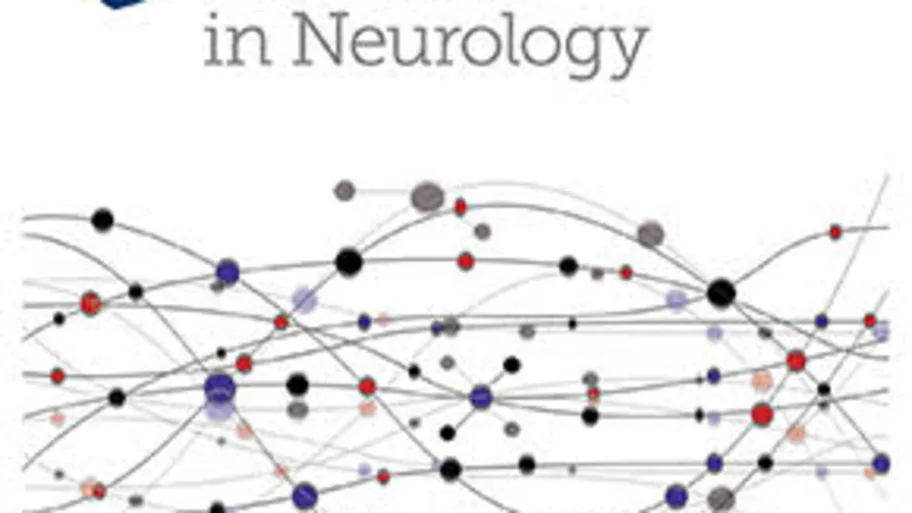
- Science news
- Frontiers news
- Anna Kramvis – A big job in a small world
Anna Kramvis – A big job in a small world
Author: Anna Farrall
Anna Kramvis is professor emerita and director of the Hepatitis Virus Diversity Research Unit (HVDRU) at the University of the Witwatersrand in South Africa and specialty chief editor for the Virology section of Frontiers in Microbiology. For the last 15 years, Anna has led the immense work being carried out at the HVDRU, breaking barriers as a woman in science and mentoring the next generation of scientists. In line with the United Nations Sustainable Development Goal 3: Good health and well-being, we discuss the progress of hepatitis B research and the challenges faced, including the COVID-19 pandemic, lack of funding, and low vaccination rates.

Photo credit: Anna Kramvis
Can you give a summary of the work being done at the Hepatitis Virus Diversity Research Unit, University of the Witwatersrand?
“Our work focuses on researching hepatitis, a potentially dangerous inflammation of the liver that can lead to serious conditions like cirrhosis and liver cancer. Our primary goal is to study strains of hepatitis B virus (HBV) found in Africa and how they induce liver disease. Our studies show that African HBV strains differ significantly from those in other parts of the world.
“At the HVDRU, our motto is simple: ‘A compassionate team, creating knowledge, developing capacity.’ We’re motivated by a desire to create a better future for all children, and research isn’t a solo activity; it’s all about collaboration. Therefore, we collaborate with many teams nationally and internationally and I travel extensively to keep these partnerships fruitful.
“To quote Baruch Blumberg, who discovered HBV: ‘Science is a forward-looking endeavor.’ Therefore, we need to train the next generation of scientists. One of my most rewarding roles is mentoring postgraduates, postdoctoral fellows, and interns. I take a hands-on approach to help them develop their questioning and research skills, and encourage them to become independent researchers. After all, the future of science is the people we mentor.”
What drew you to the field of virology and how did your academic career evolve?
“I like to say I have ‘a big job in a small world.’ My mother always told me that I was fascinated with small things but even she could not have anticipated that this love would evolve into an interest in HBV – a minuscule life form that could fit 3,600 times across a pinhead, making it the smallest DNA virus capable of infecting humans.
“My scientific journey began at the University of the Witwatersrand, initially taking biochemistry, which progressed to an honors in microbiology, where I chose virology and industrial microbiology for my research areas. Virology intrigued me, I was hooked. The remarkable complexity of viruses’ interactions with their hosts captivated my curiosity – imagine, parasites that must live inside another organism to survive! The more I learn, the less I know; one lifetime doesn’t seem sufficient for discovering this invisible world.
“The support from my family was instrumental throughout my journey. When my husband proposed, I made it clear that I intended to continue my studies. He was supportive, and it was during our marriage that I obtained my PhD. I was initially appointed as a junior researcher and gradually climbed the academic ladder to become a lecturer. After my children were born, I made the difficult decision to resign to spend time with my family.
“I love to recount the story of how I got to work with HBV. My 5-year-old daughter and I were at the University of the Witwatersrand, and on the notice board I saw an advertisement for a senior research officer. Even though I only conformed to the PhD requisite, I decided to throw my hat in the ring and, to my delight, got a part-time role. Over time, I expanded my role to full-time and established my research entity, the HVDRU, in 2008. My journey so far has taught me that research in science requires a curious mind, strong work ethic, resilience in face of setbacks, patience, and persistence.”
Have you faced any challenges or setbacks as a woman in your field, and how did you overcome them?
“Navigating the career ladder hasn’t been a smooth process. I recall my father, emblematic of the time, advising me to aim for marriage when I expressed my ambition to obtain a PhD. This was the era when women could not be overqualified, otherwise they would not marry. In fact, when I got married, the scholarships I had been granted for my master’s degree were withdrawn. This was a jarring experience, but it prompted me to prove that married women can do science.
“I was fortunate to have had wonderful mentors who inspired me throughout my journey. Professor Helen Garnett, who spotted and nurtured my passion for research; Professor Michael Kew, who encouraged quick, focused work without procrastination; and Professor Hans Will, who emphasized the importance of being as good a human as a scientist.”
You embarked on the next stage of your career this year as professor emerita, congratulations! Going forward, how would you like to continue participating in HBV research?
“I consider my move to professor emerita as a promotion, freeing me to focus on roles that are truly important to me. My primary goal is to mentor the upcoming generation of scientists, particularly in sub-Saharan Africa, where there’s a thirst for knowledge and a need for high-quality supervision. Beyond supervising my current students, I mentor early career scientists and PhD candidates from Gabon, Burkina Faso, and Ethiopia.
“I aim to boost advocacy for eliminating HBV through participating in meetings, presenting talks, and writing articles. In addition, I’m playing a key role in various international committees, such as the International Coalition to Eliminate HBV (ICE-HBV), which aims for a functional cure of HBV and the International HBV Meeting, which inspires researchers, promotes healthy discussions, and includes public forums for individuals with HBV to share their experiences.”
How has the Covid-19 pandemic impacted HBV research and progress?
“The COVID-19 pandemic significantly disrupted HBV research. Laboratory closures, supply chain disruptions, and resource diversion to tackle COVID-19 have all impeded progress towards HBV elimination. Vaccination programs have seen a considerable decrease in coverage, which could impact protection of infants and the burden of chronic hepatitis B.
“As a result of lockdown-imposed home births, critical birth-dose vaccinations have reduced. Additionally, there has been a reduction in HBV diagnosis due to the reallocation of healthcare facilities to combat COVID-19 and patients’ reluctance to seek medical help due to fear of infection.”
The World Health Organization set a target to eliminate viral hepatitis as a public health threat by 2030. In your opinion, is this an achievable goal?
“While this has spurred efforts towards eliminating HBV as a public health threat, the response has not been sufficient. Shockingly, it’s estimated that about 90% of people with chronic hepatitis B remain undiagnosed and only 5% of eligible people receive treatment, with even fewer in low- and middle-income countries. Despite having a safe and effective vaccine for over 30 years, only 46% of infants worldwide receive a timely birth dose, dropping to just 3% in some low-income countries.
“No country is on track to achieve a 65% reduction in mortality or meet all current HBV elimination targets. We urgently need to ramp up infant and birth-dose vaccination, improve peripartum treatment to prevent mother-to-child transmission, and implement population-wide testing and treatment. Even with these interventions, the goal of eliminating chronic hepatitis B will be achieved as late as 2045 in high-income North America and western Europe, and as late as 2090 in western Africa where HBV is hyperendemic.”
What is the next crucial step in tackling HBV and progressing towards the WHO 2030 goal?
**“**There is no room for complacency. We need to tackle HBV, a disease that’s been overshadowed by AIDS, malaria, tuberculosis, and the recent COVID-19. Despite causing more deaths than the former three diseases combined, HBV receives little attention and funding from global health policy makers. The fight against COVID-19 has shown how fast, effective action can be mobilized when necessary – it is time for more action to prevent and treat HBV.
“Successful strategies used in combating HIV can serve as a blueprint, particularly the power of advocacy groups to drive policy changes. It is essential to increase investment in research, improve infrastructure, and spur political action to eliminate HBV as a public health threat. Testing and surveillance can give us a clearer picture of the problem’s scale while improvements in education and awareness are crucial to breaking transmission chains.
“There are numerous active organizations in the field, such as the Coalition for Global Hepatitis Elimination, the Hepatitis B Foundation; the Gastroenterology and Hepatology Association of sub-Saharan Africa (GHASSA), NoHep, Society of Liver Disease in Africa (SOLDA), and the World Hepatitis Alliance. With combined efforts, we can move closer to the WHO’s 2030 goals.”


Frontiers is a signatory of the United Nations Publishers COMPACT. This interview has been published in support of United Nations Sustainable Development Goal 3: Ensure healthy lives and promote well-being for all at all ages and United Nations Sustainable Goal 5: Achieve gender equality and empower all women and girls.





